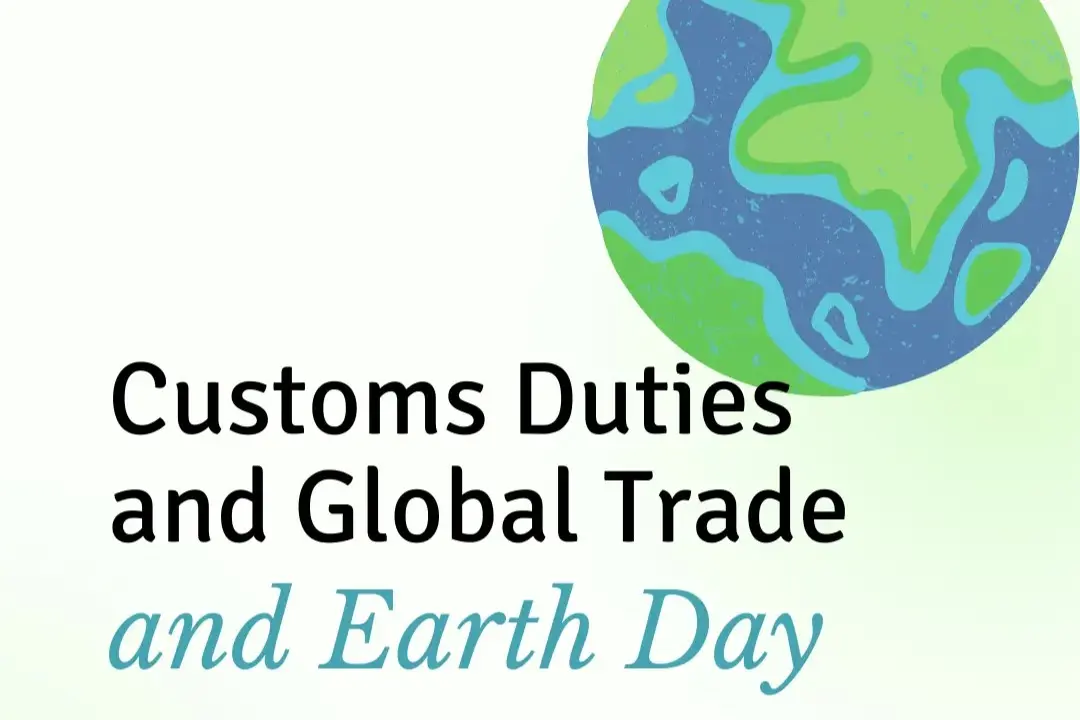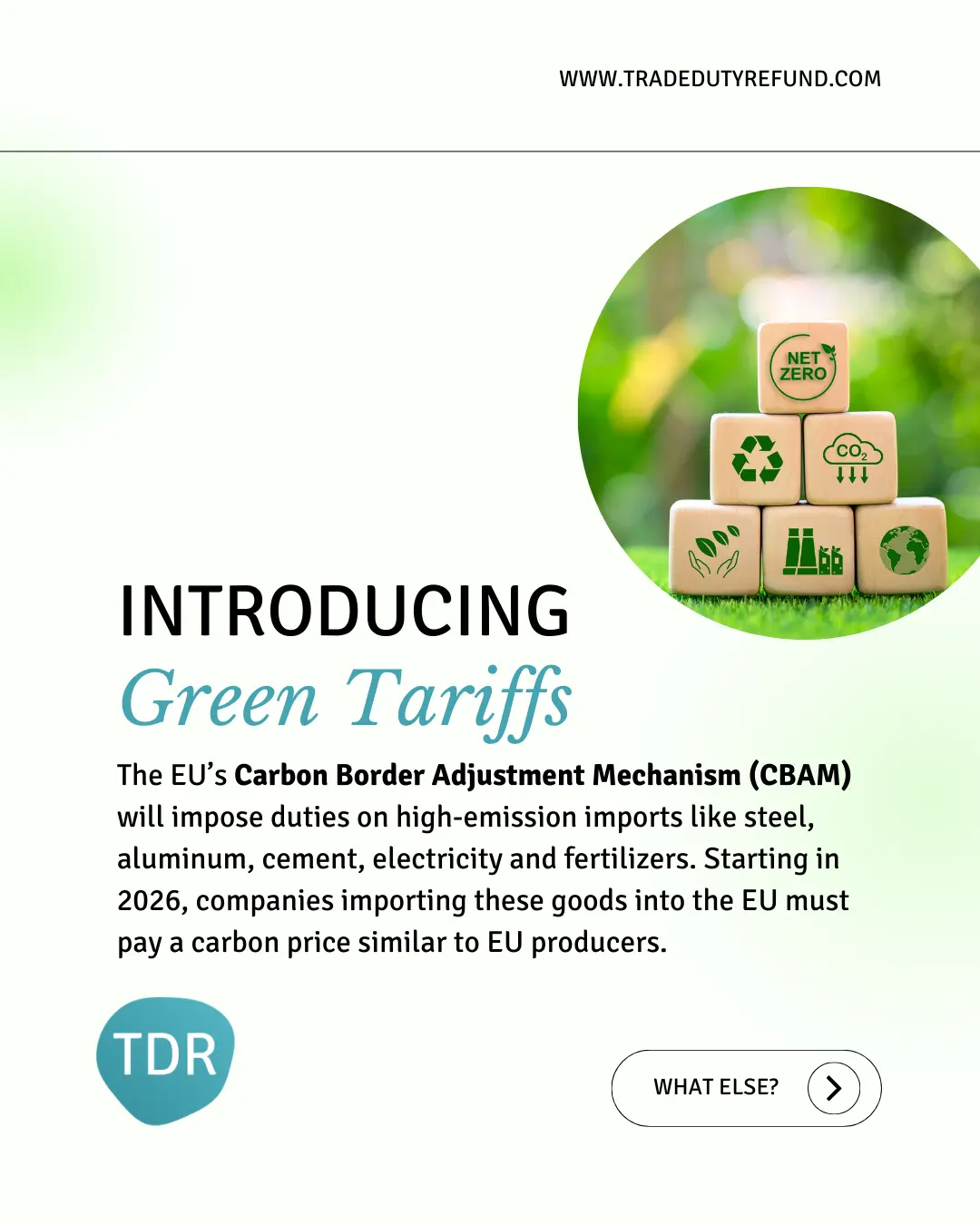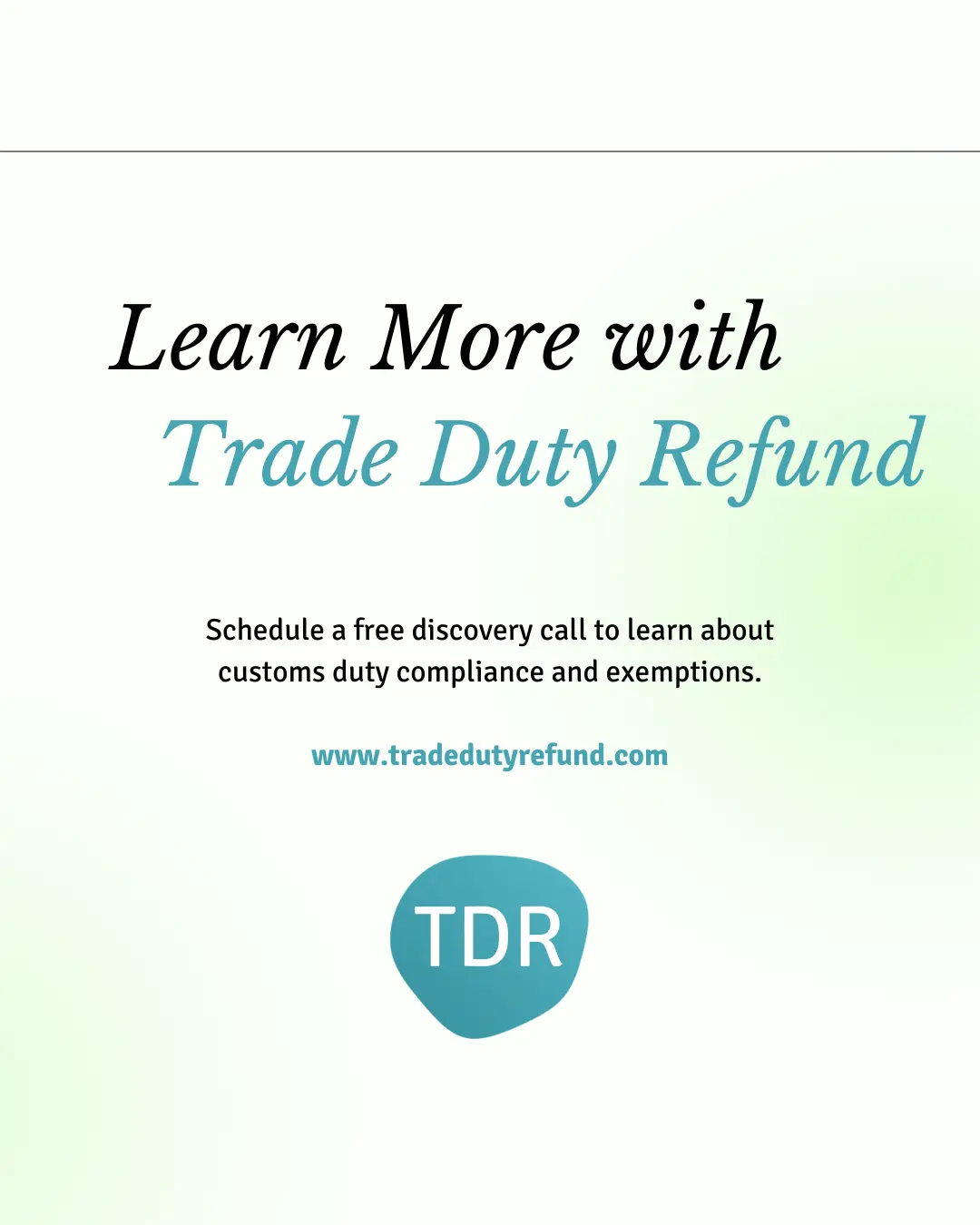Green Tariffs and Customs Duty Refunds: A Sustainable Approach for Cross-Border Retailers

As the world celebrates Earth Day, it’s essential to recognize the connection between environmental sustainability and customs duties. Globally, consumers are shifting towards eco-friendly brands, and companies are striving to reduce their carbon footprint in trade routes. Many countries are implementing “green” trade policies, from tariffs on carbon-intensive products to tax exemptions for clean technologies. Trade Duty Refund is at the forefront of these customs regulations and compliance.
Introduction to Green Tariffs
The European Union’s Carbon Border Adjustment Mechanism (CBAM) is a significant step towards promoting sustainability in global trade. Starting in 2026, companies importing high-emission goods like steel, aluminum, cement, electricity, and fertilizers into the EU will face carbon pricing similar to EU producers. This initiative aims to level the playing field and encourage cleaner production methods worldwide.
Consumer Behavior and Sustainability
A notable trend is the increasing number of consumers switching brands due to concerns over excessive or non-recyclable packaging. Approximately 40% of consumers report this behavior, indicating a significant shift towards environmentally friendly products. This trend highlights the importance of sustainability in consumer decision-making and the need for brands to adapt to these changing preferences.
Tariff Reductions for Clean Energy Products
Some countries, including the United States, are implementing tariff exemptions or reductions to promote clean technology. These incentives apply to products such as solar panels, batteries, electric vehicles, and energy-efficient appliances. By reducing tariffs on these items, governments aim to encourage the adoption of clean energy solutions and support innovation in the sector.
Customs Duty Refunds and Sustainability
For cross-border retailers, understanding customs duty refunds is crucial. Duty drawback and duty refunds are essential components of international trade efficiency. Companies can reclaim duties paid on imported goods, reducing their overall customs costs. This process not only benefits the bottom line but also supports sustainable trade practices by ensuring fair competition and promoting eco-friendly products.
How to Calculate Duty Drawback
Calculating duty drawback involves understanding the specific regulations and requirements of the countries involved. Companies need to keep accurate records of imported goods, duties paid, and any applicable exemptions. Working with e-commerce experts and leveraging AI-powered logistics can simplify this process, ensuring compliance and maximizing refunds.
Conclusion
Green tariffs and customs duty refunds play a vital role in promoting sustainability in global trade. As consumers and companies increasingly prioritize environmental responsibility, understanding these regulations becomes essential. Trade Duty Refund offers expertise in navigating these complexities, helping cross-border retailers optimize their trade operations and contribute to a greener future.
For more information or to schedule a free discovery call, contact Trade Duty Refund.






